Our homes are our sanctuaries, filled with the things and beings we cherish most. Among those cherished beings are our furry companions, who often enjoy the cozy corners and comfy couches as much as we do. In our quest to keep these spaces fresh and welcoming, many of us turn to products like Febreze. Its delightful scent can instantly rejuvenate a room, but as pet parents, a niggling thought often crosses our minds: is it safe for our dogs?
After all, our four-legged friends have a way of snuggling into everything and anything, and it’s our responsibility to ensure their environment remains safe. If you’ve ever paused before spritzing that Febreze bottle, wondering about its effects on your canine buddy, you’re in the right place. Backed by veterinary insights, this guide delves deep into the question, ensuring you’re informed and your furry family member stays happy and healthy. Most dogs are fine and have no reactions to Febreze but there is potential for individual dogs to display mild sensitivity or irritation.

What is Febreze Made Of?
In our daily lives, we come across countless products without necessarily knowing the intricacies of their compositions. Febreze, a household favorite for neutralizing odors, is no exception. But as a responsible pet parent, it’s essential to understand what goes into these spritzes of freshness.
1. Key Ingredients
Febreze’s formula has been refined over the years, but some primary components remain consistent:
- Hydroxypropyl beta-cyclodextrin (HPβCD): This is a sugar-derived molecule responsible for trapping and removing odors. Instead of merely masking scents, HPβCD physically captures odor molecules, allowing them to be swept away.
- Odor Eliminators: These are specific chemicals formulated to neutralize particular odors. Febreze boasts a range of products, some designed for smoke, others for pet odors, and more, each with its set of eliminators.
- Water: Acts as the primary solvent, ensuring all the ingredients mix well and are evenly distributed.
- Alcohol: Used to carry the active ingredients and ensure even spraying.
2. The Mysterious “Fragrance”
Listed on many household products, including Febreze, “fragrance” is a catch-all term. This umbrella term can encompass a myriad of individual ingredients. Companies often protect their specific fragrance formulations as trade secrets. However, it’s crucial to note that these fragrances are tested for safety, even if the exact components remain undisclosed.
3. Preservatives & Other Ingredients
Like many products, Febreze contains additional ingredients that enhance its shelf life, maintain product stability, and ensure efficacy. These might vary depending on the specific product variant or scent.
Understanding the composition of Febreze sheds light on its functionality and gives us a starting point for assessing its safety around our pets. With this knowledge in hand, we can delve deeper into each ingredient’s potential effects on our four-legged friends.
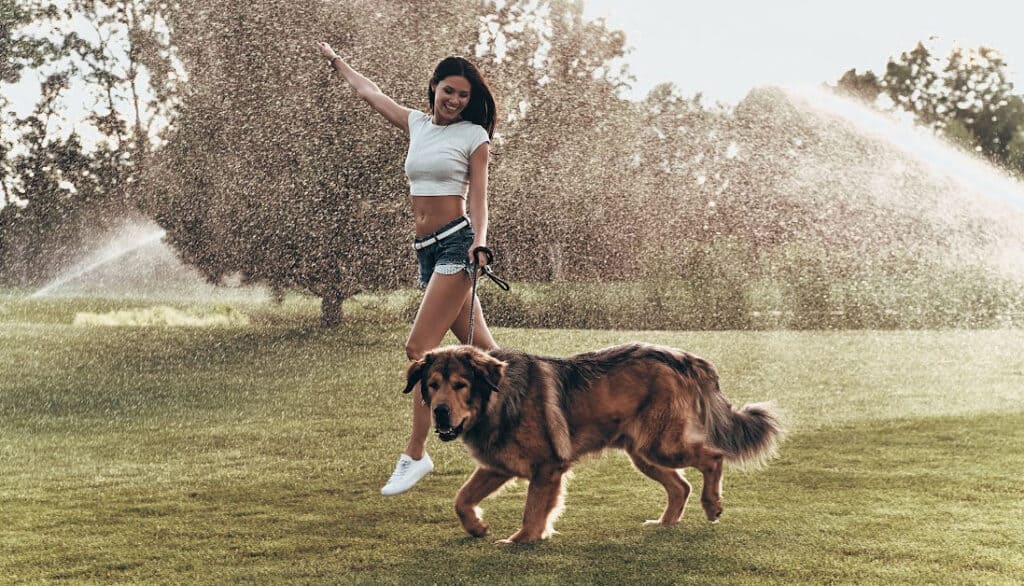
Common Signs of Toxicity in Dogs
As devoted dog parents, one of our primary responsibilities is ensuring the safety and well-being of our furry companions. Recognizing the signs of potential toxicity is critical in acting promptly and preventing complications. Dogs, with their curious natures and occasional penchant for tasting the world around them, can sometimes get into substances that aren’t good for them. Whether it’s something they’ve ingested, inhaled, or come into contact with, being aware of the symptoms can make all the difference.
1. Gastrointestinal Signs
- Vomiting: One of the most common symptoms of toxicity. If your dog vomits soon after coming into contact with a potentially toxic substance, it’s their body’s way of trying to get rid of the harmful agent.
- Diarrhea: Loose or bloody stools can also indicate that something is amiss.
- Drooling or Excessive Salivation: While some dogs naturally drool more than others, sudden and excessive drooling after exposure to a substance is a red flag.
2. Neurological Symptoms
- Lethargy: If your once energetic pup suddenly seems tired, uninterested, or less responsive, it could be a sign of toxicity.
- Tremors or Seizures: These are more severe neurological symptoms and require immediate veterinary attention.
- Loss of Coordination: Stumbling, appearing dazed, or having difficulty standing are all cause for concern.
3. Respiratory Issues
- Difficulty Breathing: Labored or rapid breathing, coughing, or any other respiratory distress can indicate inhalation of a toxic substance.
- Nasal Discharge: A sudden onset of a runny nose, especially if it’s accompanied by other symptoms.
4. Skin Reactions
- Redness, Swelling, or Itching: If your dog suddenly starts scratching more than usual or you notice redness, it could be a reaction to something they’ve come into contact with.
- Burns or Blisters: Some toxic substances can cause visible damage to the skin.
5. Behavioral Changes
- Agitation or Restlessness: A sudden change in behavior, such as becoming overly agitated or restless, can be a sign of discomfort or distress.
- Increased Thirst and Urination: Some toxins can affect the kidneys, leading to these symptoms.
If you observe any of these symptoms, especially after exposure to a potentially harmful substance, it’s imperative to act swiftly. Contact your veterinarian or an emergency pet poison hotline immediately. Remember, it’s always better to be safe and proactive rather than wait and see.
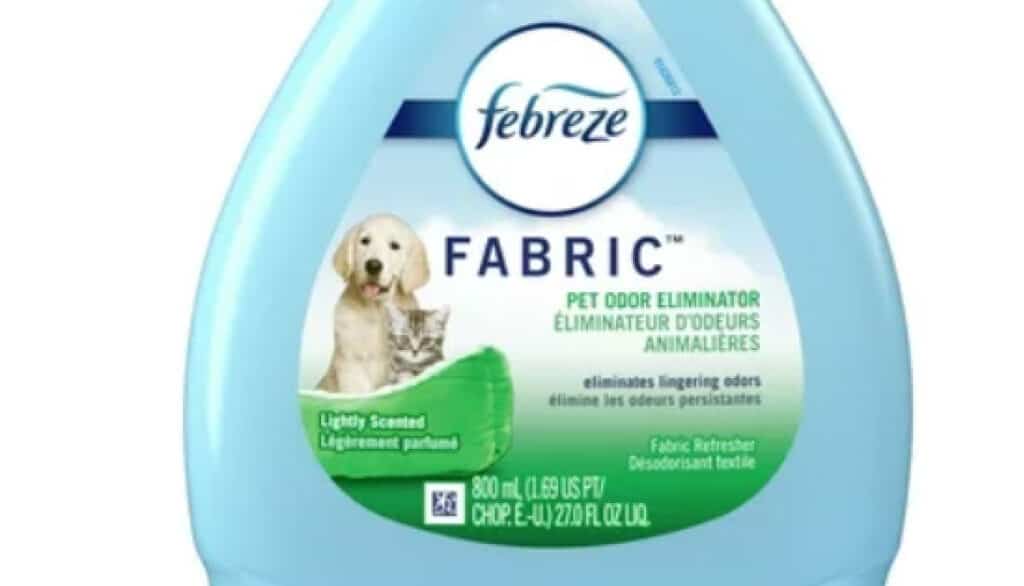
Is Febreze Toxic to Dogs?
Febreze, a household staple for many aiming to keep their homes smelling fresh, naturally raises concerns among pet parents. When it comes to our beloved four-legged family members, we always want to ensure that what’s circulating in our living spaces won’t harm them. So, the question remains: Is Febreze toxic to our canine companions?
1. What Veterinary Science Says
While individual animals can react differently to various substances, there’s no concrete evidence to suggest that Febreze is inherently toxic to dogs when used as directed.
The active ingredient in Febreze, hydroxypropyl beta-cyclodextrin (HPβCD), is a sugar-derived molecule designed to trap and eliminate odors. It’s not known to be harmful to pets.
2. Direct vs. Indirect Exposure
- Direct Exposure: If Febreze is directly sprayed onto a dog, there might be potential for some skin irritation or a mild gastrointestinal upset if they lick it off. However, such occurrences are rare and typically not severe.
- Indirect Exposure: When Febreze is sprayed on furniture, curtains, or other household items and is allowed to dry before the dog comes into contact with it, the risk is minimal.
3. Fragrance Concerns
The “fragrance” component in Febreze, like many other products, is a mix of various chemicals. While these are tested for human safety, dogs have different sensitivities. Some dogs might exhibit signs of respiratory irritation (like sneezing or coughing) if they’re particularly sensitive to the fragrances. But again, severe reactions are rare.
4. Comparing Febreze to Other Household Products
In the vast world of cleaning and freshening products, Febreze is on the milder side. Many other household cleaners or air fresheners may contain ingredients that are far more harmful to pets. It’s always a good practice to keep all household products out of reach of pets and use them in well-ventilated areas.
For the concerned pet parent, Febreze, when used as directed, doesn’t ring major alarm bells regarding toxicity for dogs. However, as with any product, it’s crucial to monitor your pet for any unusual behavior or symptoms after introducing a new substance into their environment. If ever in doubt, consult your veterinarian.

How Dogs Might Be Exposed to Febreze
Dogs, with their insatiable curiosity and heightened senses, have an uncanny ability to find, explore, and sometimes consume items that we’d never expect them to. Given the various ways Febreze can be used in the home, it’s essential to be aware of potential exposure points, both to keep our homes fresh and our pups safe.
1. Direct Spraying
- Accidental Application: In the bustle of daily life, one might inadvertently spray Febreze near or on their dog, especially if they’re moving quickly through rooms or if the dog suddenly enters the spraying area.
- Dog’s Belongings: Sometimes, in an attempt to freshen up a pet’s bedding or toys, owners might directly apply Febreze.
2. Residue on Fabrics and Furniture
- Couches and Beds: If you’re using Febreze on your furniture or bedding to combat odors, your dog might come into contact with the product residue, especially if they have a habit of lounging on the couch or sneaking onto the bed.
- Carpets: Dogs love to roll around on the floor. If Febreze has been used on a carpet or rug, they could get the residue on their fur or skin.
3. Ingesting Items Sprayed with Febreze
- Chewing Habits: Some dogs, especially puppies, have a penchant for chewing on just about anything. If they decide to munch on a cushion, curtain, or any item recently sprayed with Febreze, they could ingest some of the product.
- Licking Surfaces: Dogs explore the world with their tongues. If they sense an unfamiliar scent (like that of Febreze) on a surface, their first instinct might be to give it a lick.
4. Exposure Through Air
- Inhalation: If Febreze is sprayed in an enclosed space without proper ventilation, dogs can inhale the airborne particles. This is more of a concern with dogs who have respiratory issues or sensitivities.
Awareness is the first step toward prevention. Knowing the various ways your dog might come into contact with Febreze can guide you in using the product responsibly. Always ensure that areas sprayed with Febreze are dry before letting your dog roam, and keep the bottle itself out of reach to prevent any curious investigations.

Safety Precautions for Using Febreze Around Dogs
For many households, Febreze serves as a quick solution to freshen up spaces and eliminate unpleasant odors. While it’s generally considered safe when used as directed, the presence of furry family members does call for a few extra precautions. Here’s how to ensure that you’re using Febreze responsibly around your canine companions.
1. Read and Follow Label Instructions
- Proper Usage: Always follow the manufacturer’s guidelines. This not only ensures the product’s efficacy but also its safety.
- Target Areas: While Febreze is designed for fabrics, it’s not meant for all surfaces. Keep it away from leather, suede, and silk, and certainly away from pet food or water bowls.
2. Avoid Direct Exposure
- Spray Away: Ensure your dog is in another room or outside when you’re using Febreze. This reduces the chance of direct exposure from overspray or inhalation.
- Avoid Pet Belongings: It might be tempting to spray a dog bed or toy that’s gotten a bit smelly, but it’s better to wash these items with pet-friendly cleaners instead.
3. Ensure Proper Ventilation
- Open Windows and Doors: This ensures that any airborne particles from the spray dissipate quickly, reducing the inhalation risk.
- Use Fans: If you don’t have the option of opening a window, turning on a fan can help circulate the air and speed up the drying process.
4. Wait Before Allowing Access
- Drying Time: After you’ve sprayed an area, give it time to dry before letting your dog back in. This minimizes the chance of them picking up any wet residue on their fur or paws.
5. Store Properly
- Out of Reach: Dogs can be curious, and some might even find the Febreze bottle an interesting chew toy. Store it in a high or closed space where your dog can’t access it.
- Keep Original Packaging: In case of any adverse reaction or if you ever need to refer to the ingredients or instructions, it’s handy to have the original bottle.
6. Monitor for Sensitivities
- Individual Reactions: Just as humans can have individual sensitivities to products, so can dogs. If you notice your dog sneezing, coughing, or showing any sign of irritation after you’ve used Febreze, consider consulting your veterinarian.
While Febreze can be a useful tool in the battle against household odors, it’s paramount to prioritize the safety and well-being of our pets. By following these precautions, you can strike a balance between a fresh-smelling home and a happy, healthy dog.
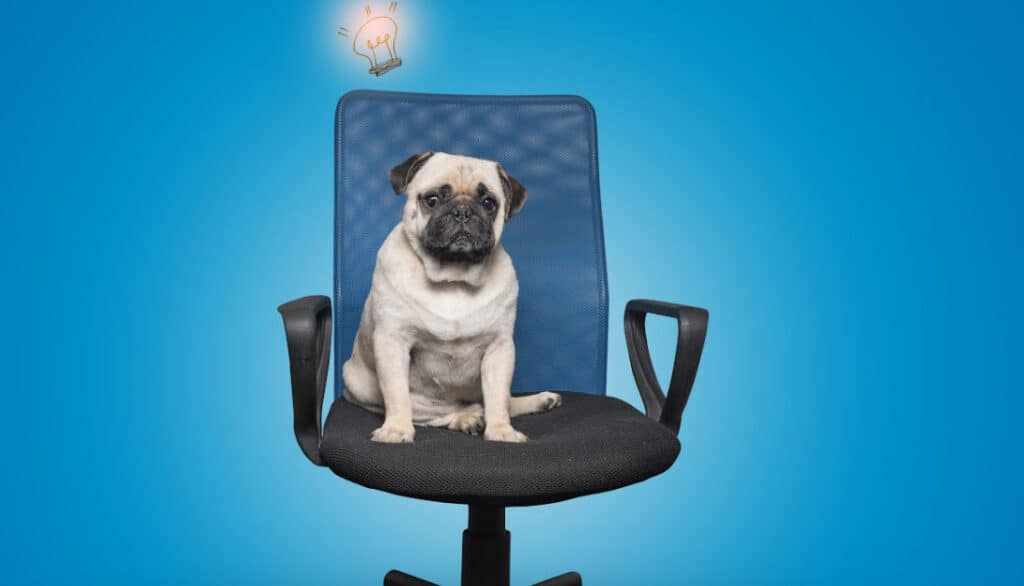
Alternative Pet-Friendly Freshening Solutions
Maintaining a clean and fresh-smelling home while catering to the safety and well-being of our pets can be a juggling act. While products like Febreze are popular, some pet owners might look for alternatives that are explicitly designed with pets in mind or are more natural in composition. Here are some pet-friendly solutions to keep your home smelling great without compromising your furry friend’s health.
1. Baking Soda
- Natural Deodorizer: One of the oldest tricks in the book, baking soda is a natural odor absorber. Sprinkle it on carpets and let it sit for a bit before vacuuming. It can also be added to litter boxes to manage odors.
2. White Vinegar
- All-Purpose Cleaner: An equal mix of water and white vinegar can act as a cleaning and deodorizing agent. It’s especially effective for cleaning surfaces and removing pet urine odors.
3. Essential Oils
- Safe Choices: While some essential oils can be toxic to pets, others like lavender, chamomile, and frankincense are generally considered safe when used correctly (i.e., diffused and in low concentrations). Always consult your vet before introducing any essential oil into your home.
4. Pet-Friendly Air Fresheners
- Brands Matter: Some brands specifically formulate air fresheners that are safe for pets. Always read labels and choose products that explicitly state they’re pet-friendly.

5. Activated Charcoal
- Odor Absorber: Activated charcoal bags can be placed around the home to naturally absorb and neutralize odors.
6. Houseplants
- Natural Air Purifiers: Plants like spider plants, Boston ferns, and Areca palms can help improve indoor air quality. However, ensure any houseplant you introduce is non-toxic to pets. For instance, avoid lilies around cats and sago palms around dogs.
7. Zeolite Crystals
- Natural Mineral: These are natural volcanic minerals that trap odors. You can place zeolite packs in areas where odors accumulate, like near litter boxes or pet bedding.
8. Pet-Friendly Candles
- Choose Wisely: Opt for candles made from soy or beeswax. These candles burn cleaner than paraffin-based ones. Additionally, there are specific pet odor neutralizing candles available on the market.
9. Regular Cleaning
- Routine Matters: Simply maintaining a regular cleaning routine can do wonders. Washing pet bedding, cleaning litter boxes, and vacuuming frequently can significantly reduce household odors.
10. Open Windows
- Nature’s Freshener: Whenever possible, let fresh air in. Regularly opening windows can help to naturally circulate and refresh indoor air.
Creating a fresh-smelling environment while ensuring the safety of your pets doesn’t have to be challenging. By exploring natural or explicitly pet-friendly solutions, you can enjoy the best of both worlds without any worry.

What to Do If You Suspect Febreze Poisoning in Your Dog
Even with the best precautions, accidents happen. If you believe your dog has had an adverse reaction to Febreze or ingested a significant amount, it’s essential to act quickly and take the right steps to ensure their safety. Here’s a guide on what to do:
1. Stay Calm
- Your Response Matters: Panicking can distress your dog further. It’s essential to remain calm so you can think clearly and act effectively.
2. Identify Symptoms
Look for signs of a reaction. Some potential symptoms to be aware of include:
- Excessive drooling or salivation
- Vomiting or diarrhea
- Coughing or sneezing
- Signs of skin irritation like redness, swelling, or itching
- Lethargy or unusual drowsiness
- Difficulty breathing
- Changes in behavior or responsiveness
3. Do Not Induce Vomiting Unless Advised
- Potential Risks: Inducing vomiting without professional advice can sometimes do more harm than good, depending on what the dog has ingested.
4. Contact Your Veterinarian or Emergency Clinic
- Immediate Consultation: Even if the symptoms seem mild, it’s always best to consult a professional. Describe the situation, the product involved, and any symptoms your dog is displaying.
- Keep the Bottle: If possible, have the Febreze bottle or packaging on hand. This allows you to relay any specific ingredients or warnings to the vet.
5. Poison Control Centers
- Another Resource: In addition to your local vet, consider reaching out to a pet poison control center. They can provide expert advice on potential toxins and guide you on immediate steps to take.
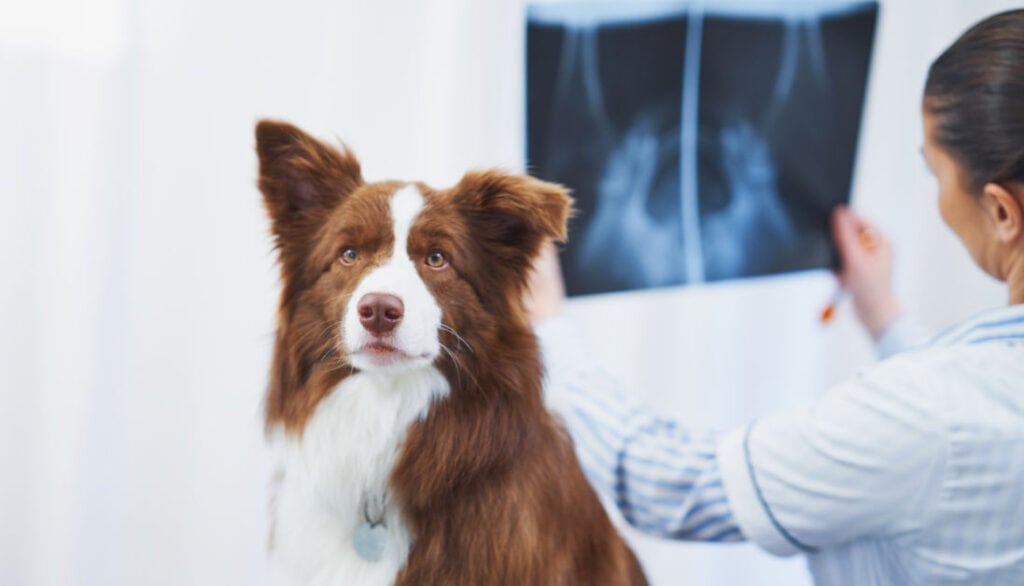
6. Monitor Your Dog
- Close Observation: Keep an eye on your dog for any changes in behavior or symptoms. Even after contacting a professional, continuous monitoring is crucial until you’re certain they’re safe.
7. Prevent Future Incidents
- Safety First: Once the immediate crisis is resolved, consider re-evaluating how and where you store and use household products like Febreze. It’s essential to ensure such incidents don’t recur.
While Febreze is generally not classified as a toxic substance for dogs when used as directed, any product can cause adverse reactions in specific circumstances or with excessive exposure. Prioritizing your pet’s safety by knowing how to respond to potential poisoning incidents can make all the difference in ensuring their well-being.
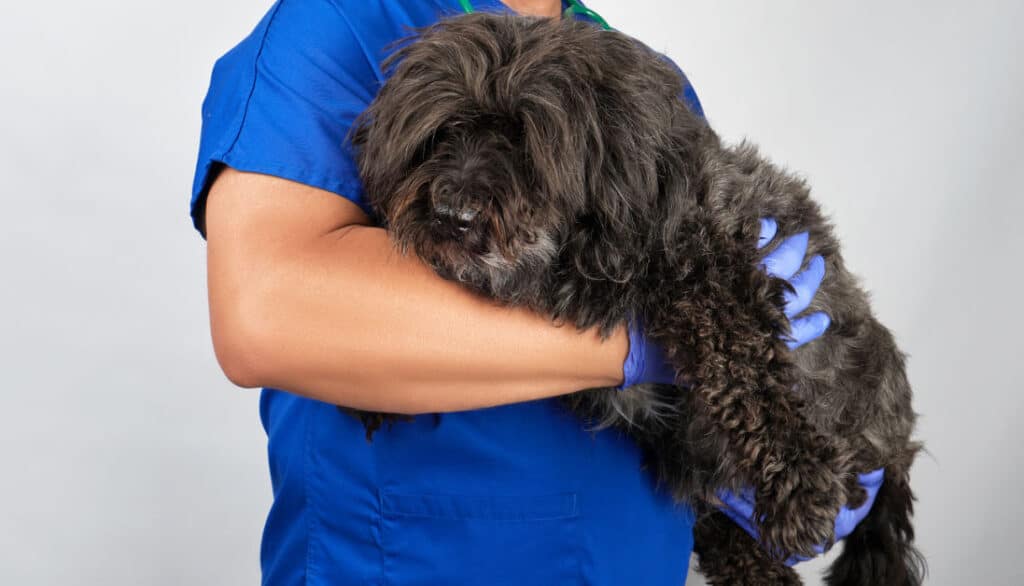
Conclusion
The vibrant tapestry of our homes is often woven with the love we share for our pets and the care we take to ensure our living spaces are both comfortable and inviting. With products like Febreze becoming household staples, it’s paramount to navigate the balance between freshness and safety. Dogs, with their playful curiosity and inherent trust in us, rely on our judgment to keep their environment hazard-free.
While Febreze is generally considered safe when used as directed, understanding its composition, recognizing signs of toxicity, and knowing how to prevent potential mishaps can equip you to make informed decisions. If you ever find yourself questioning the safety of a product, always err on the side of caution and prioritize your pet’s well-being.
For those looking for alternatives, the realm of pet-friendly freshening solutions offers a wealth of options, from natural remedies to specially formulated products. Whichever path you choose, the heart of the matter remains the same: creating a home where the air is as filled with love as it is with freshness.
Remember, the journey of pet ownership is a shared one. By staying informed and vigilant, you ensure that each step taken is in the best interest of your furry family member.
Frequently Asked Questions
Answer: When used as directed, Febreze is not considered toxic to dogs. However, like any household product, excessive exposure or ingestion can cause adverse reactions in pets. Always use Febreze according to the label instructions and keep it out of reach of pets.
Answer: Common symptoms might include excessive drooling, vomiting, coughing, sneezing, skin irritation, and behavioral changes. If you observe any of these or other unusual signs in your dog after Febreze exposure, consult your veterinarian immediately.
Answer: Yes, there are many alternatives to Febreze that are safe for pets. These include natural solutions like baking soda, white vinegar, and certain essential oils, as well as commercially available pet-friendly air fresheners and deodorizers.
Answer: To minimize exposure, always spray Febreze in areas your dog can’t access and wait for the product to dry completely before allowing them back in. Regularly clean surfaces and fabrics, ensuring no residue remains, and store Febreze bottles out of reach of curious paws.
Answer: If you suspect your dog has ingested Febreze or any product not intended for consumption, contact your veterinarian or an emergency animal clinic immediately. While Febreze is not classified as toxic when used properly, ingestion in large amounts can be harmful, and it’s always best to consult a professional.
